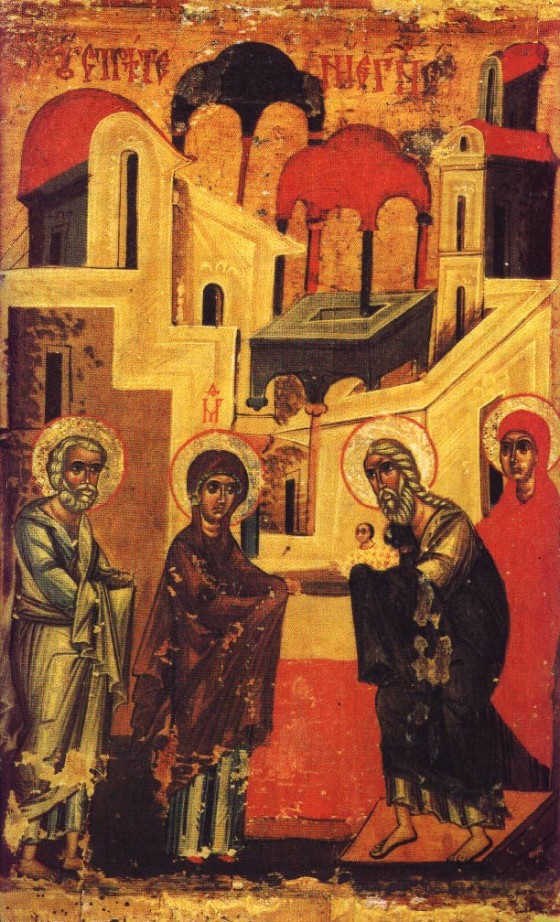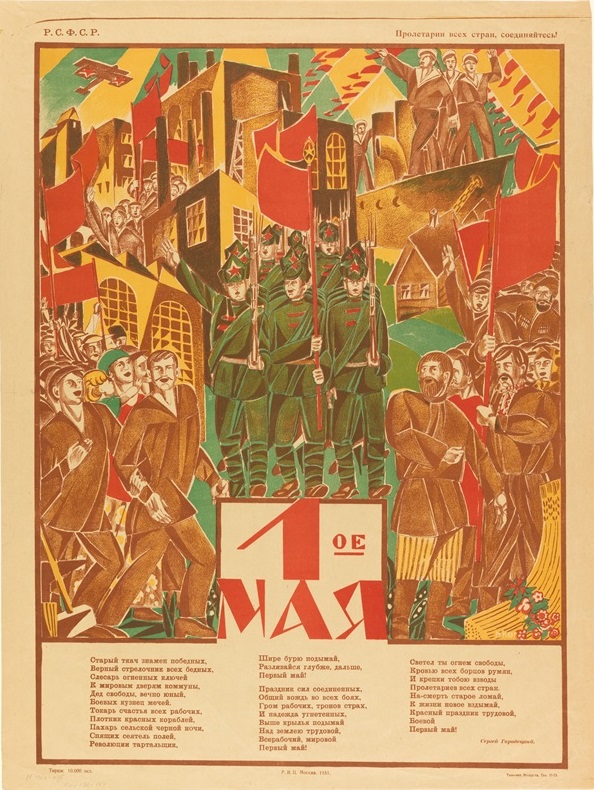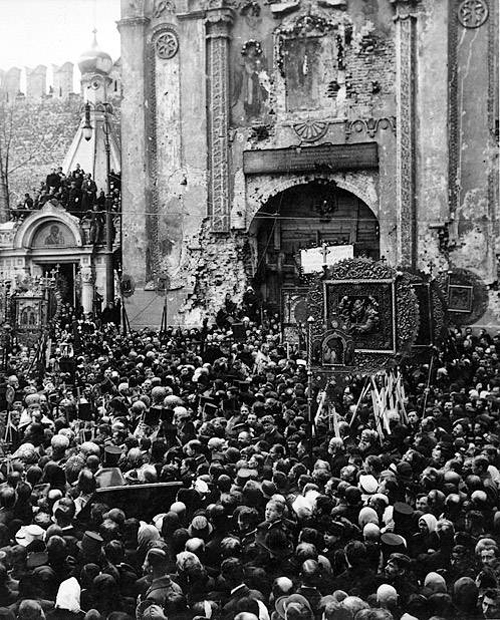With raised flags and soaring spirits, soldiers, sailors, workers, and peasants rally together in this Soviet poster by Nikolai Kogout. United, they celebrate May first, International Workers’ Day. Conceived as a labor strike for an eight-hour workday, the holiday was adopted by Soviet leaders to commemorate the struggle of proletarian workers around the world. In 1904, Lenin described it as “the day when the workers of all lands celebrate…their solidarity in the struggle against all coercion and oppression of man by man, the struggle to free the toiling millions from hunger, poverty, and humiliation.”1 In Kogout’s poster, this empowerment is palpable. Demonstrators shout and gesture with zeal, looking up, as if toward a bright future. New factories thrust skyward in sharp, vertical lines. Such modern architecture illustrates recent advances in industrial technology, which also promised to improve safety and sanitation in the workplace.
These buildings jut out at odd angles, without realistic perspective or scaling. To capture the holiday’s heady optimism, Kogout abandons the mundane realism of the everyday, veering instead into abstraction. Drawing on the geometric vocabulary of the Russian avant-garde, he presents a crisp new world, nearly within reach. Though this approach feels innovative, it actually revives a centuries-old tradition. Compare Kogout’s urban architecture to the depiction of Jerusalem in a Russian Orthodox icon (Fig. 1). Here, too, the perspective is askew. Like Kogout, this painter negotiates between real and ideal worlds. Working in flat colors and simple, geometric shapes, these different artists seek to convey universal messages. Eliding gritty details—the smoke of factories, the swelter of Jerusalem—they prompt the viewer to imagine a kind of heaven on Earth, be it spiritual or social.

Figure 1: The Presentation of Christ in the Temple, Late 15th to early 16th c. Egg tempera on lime wood.
Although Soviet leaders denounced Orthodoxy, their similar visual rhetoric is no accident. Communism became a secular religion, with its own creeds and rituals. By repurposing the strategies of religious painters, Soviet artists hastened the transfer of public faith from God to State. Just as an older generation of Russians interacted with icons daily in their homes and churches, new Soviet citizens saw political posters like Kogout’s fully integrated into modern life, in the streets, the workplace, and the recreation center. Parades and demonstrations, like those for International Workers’ Day, closely resembled traditional Orthodox processions (Figs. 2-3). But where priests lead the faithful through the streets with icons aloft, Party leaders replaced these religious objects with posters and banners, raised for all to see.
1. Vladimir I. Lenin, “May Day,” Marxists Internet Archive, April 1904, https://www.marxists.org/archive/lenin/works/1904/apr/30a.htm. ↩
Virginia McBride was the 2014 Peter Krueger curatorial intern in the Department of Drawings, Prints, and Graphic Design at Cooper Hewitt, Smithsonian Design Museum. She studies art history at Kenyon College.

